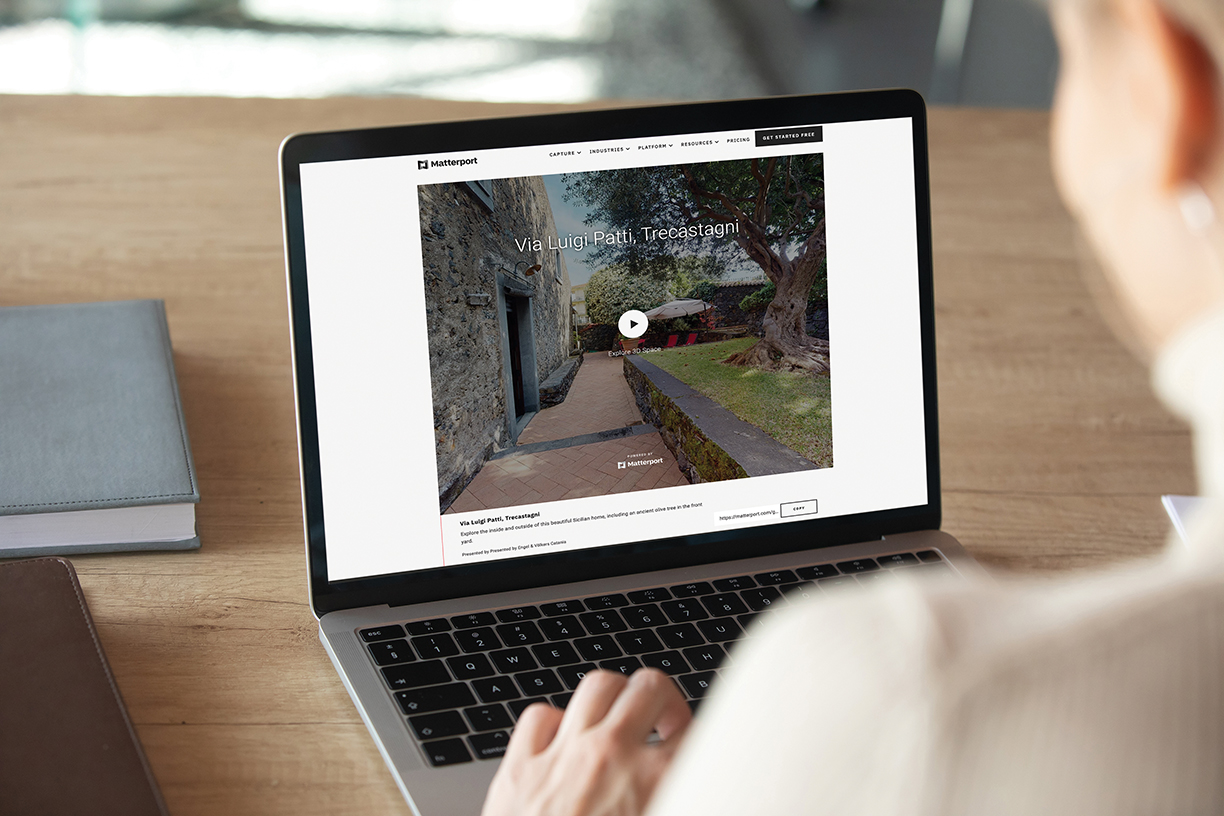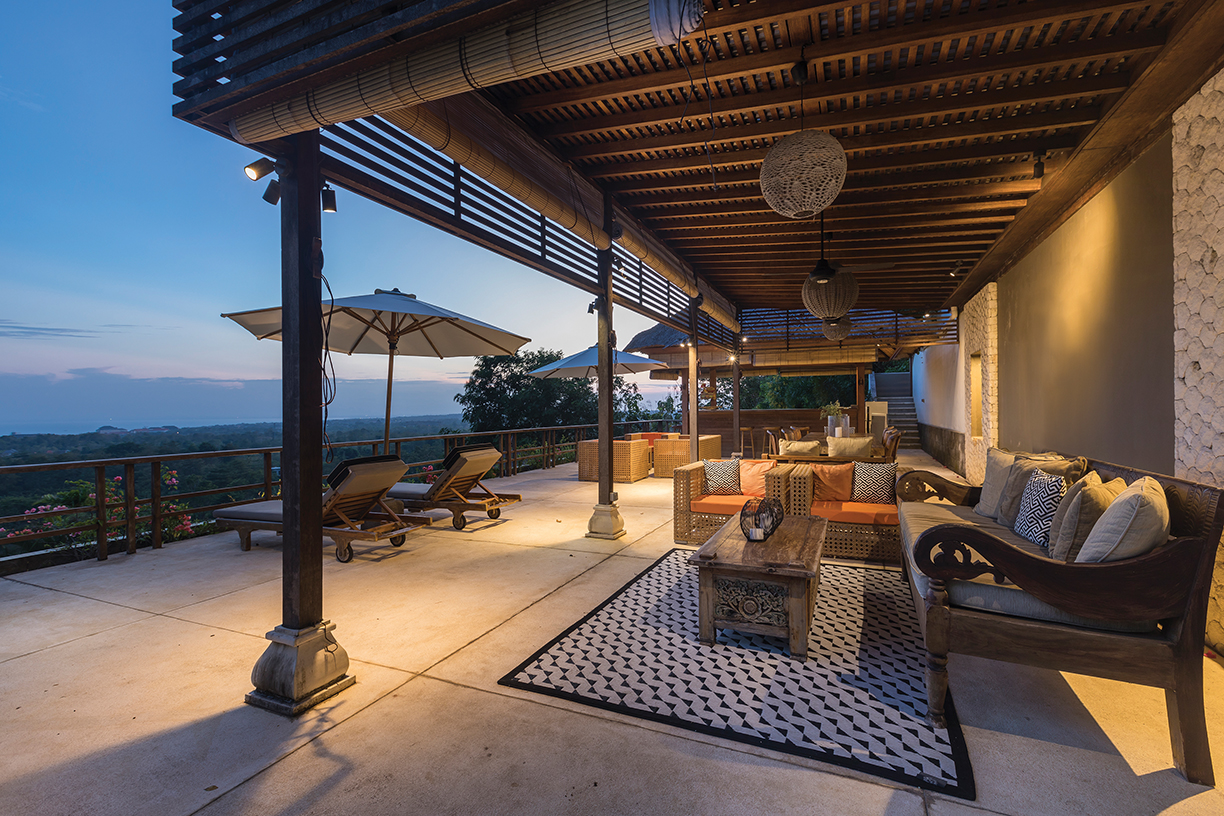Cover photo ©istockphoto.com / Evgeny Zhigalov
Of all the changes brought on by the pandemic, what is here to stay?
From a drone’s eye perspective of 50 years, real estate might resemble a Mobius strip, a never-ending roller coaster of ups and downs with each boom-and-bust cycle sparking small changes and adaptations. But none have had an impact comparable to the pandemic, which ushered in an avalanche of innovation, new ways of doing business and a profound shift in consumer values. Some effects are a temporary response, while many reflect a significant transformation.
“The way that real estate as an industry operates has changed, and I believe it is a microcosm that can be applied to 90 percent of the economy out there. No one is going back, and that means the way we live, work and play changes forever,” observes Marci Rossell, former CNBC chief economist and chief economist for Leading RE. “COVID drop-kicked us into 2030.”
Ask agents if any prior cycle compares to the experience of the last year and a half, and they will tell you the pandemic boom is unparalleled. “I don’t think any Realtor in the country has had the experience we’ve had this last year! Yes, there have been good upticks in certain years in certain places, but never anything like this!” shares Trinkie Watson with Chase International in Lake Tahoe.
“We’ve certainly seen periods where you had to pivot skill sets and be really aware of the market and things that would impact clients, but we’ve never seen anything like the last year and a half, (and) that’s been compounded by a lack of availability,” shares Tami Simms, with Coastal Properties Group in St. Petersburg, Florida, who is also trainer for the Institute for Luxury Home Marketing.
“I think that last year was the most significant year of change from a tech perspective,” says David Marine, chief marketing officer at Coldwell Banker Real Estate. The pandemic market accomplished what major brands had been working on for years. “In 90 days,” he says, “every single real estate agent figured out a way to move the transition online. Now it’s commonplace. It’s no longer an issue.”
“Agents basically skyrocketed 10 years into the future, and they did it in a two-month period,” says Rossell. Rather than an abrupt switch, industry experts see real estate’s seemingly overnight embrace of new technology as acceptance of tools already available. Think of it as “escalating trends that were already underway that would have happened, but they are going to happen almost a decade faster than anyone expected,” explains Rossell.
Will it be a virtual world?
Prior to what Simms dubs “the Zoom age,” she says, there wasn’t a widespread understanding or trust or proficiency with virtual apps. “Now,” she says, “we know how to use it. We’re reasonably proficient at it, and there’s a level of trust. So, we’re able to embrace this technology. You know I don’t ever want to go back to having to communicate with out-of-state buyers purely by telephone.”
Virtual Sales are touted as the main advancement sparked by the pandemic, but an even greater benefit has been an industry-wide recognition and adaptation of virtual apps to enhance and expedite the process from initial views of a property to consumer education. “FaceTime is an effective tool, but really more to give a prospect a better idea of the home, not to induce an offer … though it could,” says Watson.
Looking ahead, agents don’t expect virtual sales to disappear, but they will continue to be a rarity. “I don’t think we’ll see many escrows where the buyer hasn’t physically seen the property. Yes, Zoom and similar will continue to be a part of our lives. Also, more defined photography for our listings … the importance of a comprehensive ‘walk through’ so prospects can get a good feeling for how the house flows,” says Watson.

Detailed virtual walk-throughs became more important than ever, with platforms such as Matterport leading the way.
©istockphoto.com / fizkes
“In-person viewings have been very limited. No one wants to go to open houses. No one is walking about a house just for fun. People are looking online. They are viewing the pictures of a listing maybe 10 times before they see a house. So, a showing is more like a fourth showing, and agents need in-depth knowledge of a property,” says Joanne Nemerovski, with Compass in Chicago.

©istockphoto.com / joakimbkk
Dreaming of Home
The ability to work remotely is often cited as the main driver for the surge in sales, but even more fundamental are new consumer values regarding home and lifestyle. Citing millennials, who now comprise a substantial portion of buyers, Nemerovski says many were starting careers and literally were never home, so home basically was a shoebox they visited. “I think that sentiment has changed. Home is where the heart is. It has become the center of people’s lives. People are also more respectful of their homes.”
Everybody wants their dream home,” says Frank Aazami with Russ Lyon Sotheby’s International Realty in Scottsdale, Arizona, “because they just cashed out of another home that maybe they inherited or maybe were there for 20, 30 or 40 years.”
Buyers’ expectations of quality are high and will continue to be so. “People understand the level of finishes better than ever before. We’ve gotten so much better with respecting architects, good architects’ work, good designers’ work,” he says.
“All of a sudden, consumers are finding that now it’s not all about a commute. It’s about ‘does the place that I live offer me the things that I want to do when I have a little extra time, both inside and outside.’ Outside spaces have always been a luxury item, but more so now than ever,” says Simms. Topping wish lists are beautiful recreational facilities, inside and out. Also becoming more desirable is access to nearby outdoor venues such as parks and trails. Before COVID-19, outdoor living was a growing trend; now a connection with nature has become almost an essential for homes, particularly new construction.
Skills Put to the Test
With properties selling days or hours after going on the market and multiple platforms broadcasting new listings, it would seem agents’ skills are not essential. However, the pandemic market has proved the opposite. “It’s been a really intense time for real estate professionals in terms of making sure that their communication skills are absolutely the most important thing that they have, setting expectations, both on the seller side and the buyer side,” says Simms.
“There’s more attention to vetting prospective buyers, making sure they are qualified to buy before showing them property,” adds Watson.
Price is only part of an offer’s appeal to sellers, and crafting a winning offer has been an important skill for agents and buyers in the current market. Even when multiple offers become less of the norm, this aspect of buying will continue to be important.
An intense market tempts buyers to forgo contingencies. “It has been definitely challenging to counsel people on strategies to be successful in acquiring properties, but also in making sure that they truly understand the ramifications of releasing contingencies and know the risks they are taking on,” shares Simms.
“A downside of the intensity has been buyer’s remorse, cancellations before closing, some attempted lawsuits … a result of no inspections, jumping too fast without thorough exploration, et cetera. This would be a small percentage of the purchasers, but certainly a reflection of ‘herd mentality’ going the wrong way!” says Watson, referring to the pressure buyers felt to make a decision.
Cooldown Ahead
With days on market hovering just over 14 in July, prices rising in 99 percent of all metro areas, and double-digit price increases in 94 percent of metros (according to NAR), the current pace might seem no less fevered. Still, indications of a transition are beginning to filter out from a number of locations. Days on market are increasing ever so slightly, and overblown prices are being reduced. Or, as Katie Treem at Keller Williams Realty in Portland, Maine, explains, it might be that a property receives 20 offers instead of 40. “We’re still seeing people moving from New York, Boston, Connecticut and D.C.,” she says.
Also, agents like Treem are just beginning to see a few who bought in 2020 reselling. Sometimes they improved the property, but in others, decided the lifestyle was not what they desire or the commute, even for occasional days in the office, was too difficult.
In Tahoe, Watson says, “I believe the intensity has certainly calmed down, and I suspect very few listing agents will accept an offer from a buyer who hasn’t physically viewed the property. That goes for waived inspections … I’d be surprised if many are doing that any longer.”
No Bubbles Here
Bubble talk has become almost a perennial for real estate, but experts such as Rossell do not subscribe to this characterization of the market. Rossell says, “It’s not a bubble. It’s simply real demand bumping up against severe supply constraints. But this doesn’t mean house prices continue to go up. But what it does mean is you’re very unlikely to see the bottom fall out of the market, the way that you did in 2007, 2008.
“September 11 forever changed the way that we thought about terrorism. And I think in the same way, the first round of COVID in March of 2020 forever changed the way that we thought about public health, and pandemics. I think we’re all going to be living with the reality that at any given time something like this could happen, just like terrorism.”

Days on market are increasing, and overblown prices are being reduced. It might be a property receives 20 offers instead of 40, says Katie Treem at Keller Williams Realty in Portland, Maine.
©istockphoto.com / sara_winter
This story originally appeared in Unique Homes Fall ’21. Click here to see the digital version.
Generational differences drive so many societal changes, yet overgeneralizations about the wants and needs of large portions of the population can lead to costly misconceptions. One well-respected researcher is trying to unravel myth from reality.
The new year is prime time for real estate forecasts and most experts look to the economy, stock market performance, job growth, the cost of labor and materials for insights into the future. Population trends figure into these recipes, but some experts contend the key to understanding what’s ahead for real estate lies in an in-depth analysis of changes in generations decade by decade.
“Sweeping demographic and generation shifts are quickly transforming America,” says John Burns in the introduction to Big Shifts Ahead, which takes a deep dive into generations and how they influence real estate. “Every individual and business feels the impact of government policies, the sharing economy, new technologies and rapidly changing societal norms. Many of the shifts make life better for some and worse for others. Those who understand and plan for the big shifts ahead better than others will win,” says Burns, whose research also contributed to a report from the Urban Land Institute (ULI), Demographic Strategies for Real Estate. From the growth of suburban communities that combine the most-desired features of urban settings with a small-town vibe, to the rise in demand for rentals, many of the trends Burns foresees are already at play, while others are just beginning to gain momentum.

For the last 12 months or more, Burns, CEO of an eponymous real estate consulting firm, and Chris Porter, his co-author and the firm’s chief demographer, have been on the road speaking at dozens of events including ULI conferences, spreading what could be considered the new gospel of generational understanding. The duo initially laid out their findings in Big Shifts Ahead, which was published a year ago.
Traditional demographic categories span an entire generation, a period that can be as long as 20 years or more.
However, such groupings do not always accurately reflect the behavior and attitudes across the entire spectrum of ages in a generation, as happened with a number of projections of Millennial behavior regarding homeownership and real estate. Burns points out that a 17-year-old high school senior has little in common with a 33-year-old father, even though by traditional classifications both are considered Millennials. Instead of continuing their early pattern of gravitating only to urban centers, as Millennials age, marry and have children, they are moving to more suburban settings.


Consider Gen X born from 1965 to 1983. In 2015, this group was 32 to 50 years old. Burns says the early members of Gen X purchased homes in the 1990s, while later members purchased in the mid-2000s and suffered more foreclosures than any other group through the Great Recession.
Instead of broad categories spanning an entire generation, Burns groups the U.S. population by decade born and profiles how the behavior of each cohort changes over time in response to outside forces. There is a surprising consistency to this method since the number of people born during each decade ranges from 40 million to 44 million. Even though population growth slowed by 8 million in the late 1960s and early 1970s, immigration compensated for the shortfall.
The economy affects jobs and the ability to buy a home, but a good or bad economy also leaves a deeper imprint. Burns says the growth of the economy during childhood and early adulthood determines lifetime spending habits. Net worth varies by decade. The group born in the 1950s is heading into retirement with $18 trillion, the most of any generation, according to Burns, who dubs this group the Innovators, because they led a technology revolution and started new companies at a pace that is still not matched, boosting productivity and longevity.

From mass production of cars to medical innovation to smartphones, technology also shapes generations, playing into where they live, the size of families, and the ways in which they connect with others. He calls those born in the 1990s the Connectors since they led 24/7 wireless connectivity.
At every level — federal, state, local — government has and continues to influence trends related to development and housing. After World War II, the GI Bill encouraged homeownership, and the federal push to develop interstate highways spurred suburban development. State tax and development policies to some extent determine where people live. In recent years, low state taxes have been one of several catalysts shifting the population toward the south. “Approximately 42 percent of America lives in Southern states, but 60 percent of the growth is going on there,” observes Burns.
This year, changes in federal tax law are eliciting greater scrutiny on ways in which policy changes might affect why and where people relocate, decisions on where to retire as well second and primary home purchases.
Since the recession, the level of homeownership has fallen, and Burns forecasts the rate of homeownership will fall to 60.8 percent by 2025, noting that anecdotal feedback suggests the homeownership decline could go even lower. He cites several patterns that will continue to put a damper on home buying. One he likens to a return to a version of boarding houses at the turn of the 20th century.
“Inspired by Airbnb, a number of homeowners have told me they are bringing unrelated housemates as a source of income and not just for short-term stays. Homeowners and renters are meeting online. Mature homeowners need the income, and young adults need lower rent. While this is a great market-based solution to an affordable housing pattern, it has slowed household formations.”
More people — not just potential first-time buyers — are renting. Approximately 12 percent of Americans now rent a home, which Burns says is a “game changer.” Another shift, “renting from older Americans has surged in the last 12 years.”

Some want to try out a new location or environment; others need the cash. Some don’t use the mortgage interest deduction.
Also making renting an appealing option is the change in what’s available for rent. Many new multifamily buildings are more upscale with high-end finishes and a range of amenities. A cadre of new companies focus on creating newly constructed single-family homes specifically for the rental market, and it’s turning into a profitable business. Burns says, “several companies have shared that the yields in some markets are excellent. These builders and operators tend to have a long-term view toward building a steady, asset-based cash flow stream.”
Most experts anticipate that autonomous driving (driverless cars) will change where people live, and planners are already taking this into account. Some speculate that suburbs located farther from urban centers and jobs, which are typically more affordable, may be in demand again as commute time can be better utilized. Burns also suggests driverless cars will change attitudes regarding aging in place. He expects demand for assisted living centers will grow less than people think. Already, builders report an uptick in the number of individuals investing in renovations, so they can stay in their homes as they age.
The amenities that create status are being revised. Says Burns, “Experiences are the new brag,” which means a home’s walkability score or locations near activities might create value. “The best house is more likely to be near great things to do rather than a large home with a large yard,” he adds.
In terms of the long-term impact of some changes, Burns still has a lot of questions. For example, women now earn 58 percent of college degrees, compared to only 42 percent of degrees in 1972 when Title IX was passed. “Both men and women have a difficult time making sense of how this will change society,” he says.
If you are not familiar with the term surban™, it might be time to add it to your real estate vocabulary. Burns trademarked the term, and it is popping up in a number of conversations in the industry. Surban refers new areas that mix urban and suburban, often offering smaller homes with little or no yards in high population areas. Entertainment, restaurants, shopping are all nearby and walkable.
Expect to see more development shift toward the suburbs, including surban areas. Burns projects the suburbs will capture 79 percent of household growth over the next 10 years and urban growth to capture 15 percent.
The impact of the Connectors and Globals is yet to be realized, and it will be interesting to see the changes they bring to the way we live.

Photos courtesy of iStockPhoto.com















